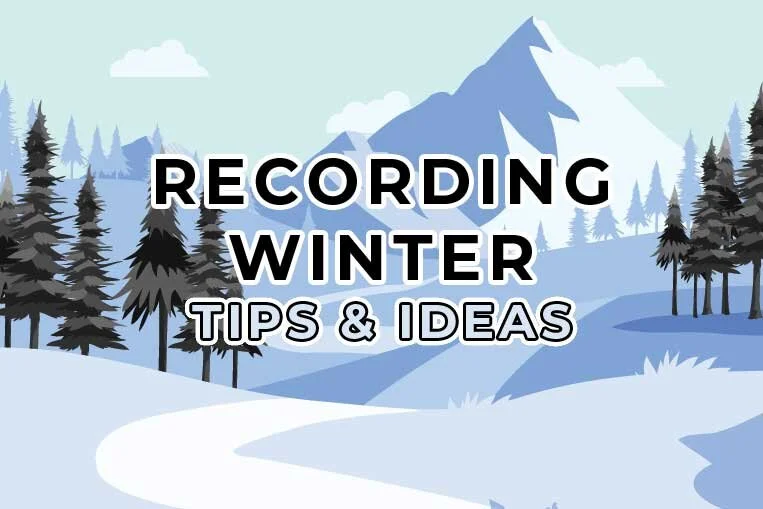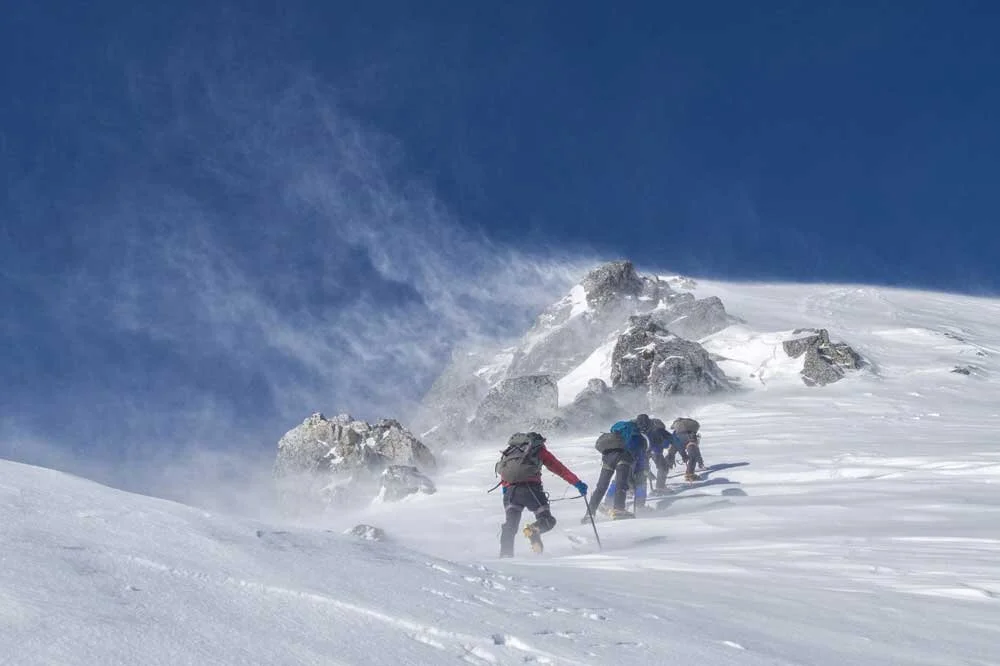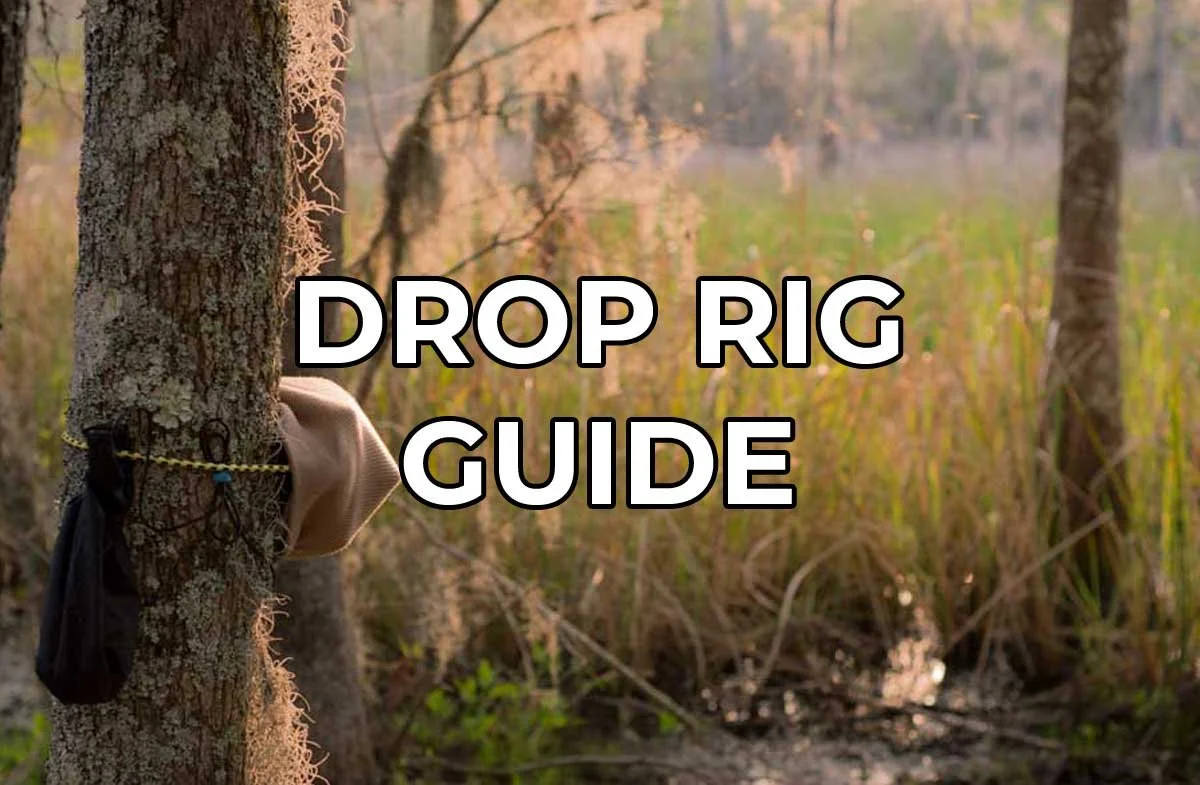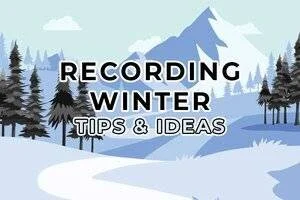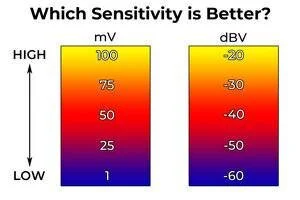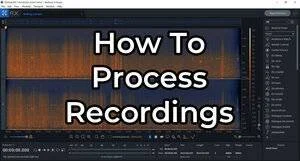Field Recording in Cold Weather (Winter Guide)
Learn what new sounds winter brings, as well as the challenges (and how to overcome them) in this article!
Going out and doing anything during the winter can be tough. The inhospitable conditions makes it all too easy to stay inside and be comfortable. Well, for us field recordists, there’s great reason to get outside during this time of year.
Field recording during the winter offers unique opportunities and challenges for the field recordist. In this article, we will learn about sounds only around during this time of year, as well as how to cope with the challenges of recording in cold weather.
New Sounds
Winter is perhaps the most unique season. With its freezing temperatures, lack of wildlife, harsh winds, and layers of snow, it certainly looks like an alien scene. While this time of year makes you want to hibernate under your blankets, I encourage you to explore and record your winter sounds!
The following paragraphs will give you some ideas of what you can record during this time.
Birds
Sadly for bird lovers, the new sound of birds during winter is silence.
A lot of people become interested in field recording because of their love for birds. If you are one of those people, you probably know that winter is not a good time for bird songs.
The species that stick around for winter have to conserve their energy as much as possible to survive this unforgiving time of year. Food is scarce and birds cannot afford to put any energy towards singing.
However, the lack of bird song can help to record other sounds in their purest form.
Water
During the year, it is normally very difficult to record uninterrupted, gentle water sounds. There is always an abundance of life around sources of water and those species make lots of sound. Birds, insects and mammals create a constant “hum-of-life” that blends with the natural sounds of the environment.
With this “hum” largely absent during winter, it is possible to record water sounds in their purest form.
Now I’m not saying one is better than the other (they are both incredible). What I am saying is that we should take advantage of this opportunity and bolster our field recording collections with the solitary sounds of winter.
Ice
Not all water remains liquid during the winter and ice presents another exclusive sound of winter.
If you have never heard the sounds of ice before, you need to listen below.
These sounds are entirely natural and are caused by temperature change. Changing temperatures causes the ice to contract and expand and creates these interesting sounds.
The best time to capture these sounds is just after sunrise and sunset. These times are when the greatest temperature changes occur. The ice slowly responds to these temperature changes and begins to make sound as it slowly heats or cools.
There are also a lot of interesting sounds effects you can create with ice. I’ve posted a couple tracks below for your inspiration.
Snow
Snow is another form of frozen water that only occurs during winter. Most people think falling snow is silent but that is not always the case. Although the sound of light, fluffy snow is imperceptible to our ears, denser snow does make sound that we can hear.
Falling snow is a very delicate sound that requires highly-sensitive and low-noise gear to capture.
To learn more about the quietest field recorders, check out my article on the subject here.
Snow can also add an element of depth to other sound like wind. The sound of wind blowing loose bits of snow around creates a unique texture that just sounds cold.
This winter, I want to recreate an auditory experience from my childhood. I always loved winter and spent many hours outside exploring the woods, building forts and listening. One of my favorite things to do was lie down on my back, close my eyes and listen to snow fall around me.
I plan to record this sound by putting my recorder inside the hood of an extra winter jacket. I will update this post with the recording once I have captured it!
Wind
The winter months are the windiest time of year. Large temperature gradients during this time generate a lot of air movement which results in higher wind speeds. Additionally, without any leaves on the trees, the wind is free to blow further and faster as it travels unimpeded across the landscape.
Now is the best time of year to capture the essence of winter: a powerful wind whipping through a barren landscape.
We have already had our first snowfall of the season and I was able to record it. Below is an excerpt from my hike through a New England forest during a snowstorm.
New Challenges
Along with all these new sounds to record, the winter also brings new challenges for us to deal with as field recordists. The two greatest challenges of recording during the winter are noise pollution and battery life.
Noise Pollution
When I am recording natural sounds, I strive to record only natural sounds. I find motorcycles, trucks, jets and people distracting from the perpetual peace created by nature. During the winter, it is especially difficult to escape these unwanted sounds.
Have you noticed that that main road or highway sounds closer to your house during winter? The winter landscape is why.
Just like how the wind can travel further during this time, so can sound. Without any leaves on the trees and with most vegetation having died back into dormancy, the landscape has lost a lot of its sound absorption.
With no greenery to absorb, reflect and scatter sound waves, the sounds of humans and their machines travel further than ever before. In my article, “How to Find Quiet Nature,” I state that 1 mile is enough distance to render roads silent for recording purposes. During the winter, this distance is much greater.
Plan for this in advance to avoid becoming frustrated in the field. Use the tools and techniques mentioned in the above article to find field recording locations that are 2 miles from any roads.
RELATED: Best Recording Times To Avoid Noise
Battery Life
Noise pollution isn’t the only killer of quality audio; your batteries will significantly impact how long you can record for.
Out of the three kinds of batteries, Lithium batteries work the best in cold weather, down to -40°F. The best lithium batteries are the Energizer Ultimate L91. If interested, here’s a link to some to Amazon.
Alkaline
These are your standard battery commonly found in any store. They perform very poorly in temperatures below freezing. Because their cells use a water-based electrolyte, ion mobility is extremely limited when temperatures drop. Expect a 60% drop in battery life in cold weather.
Lithium
Although lithium batteries still rely on chemical reactions to produce their power, they can effectively operate in much lower temperatures than their alkaline counterparts. In comparison to alkaline batteries that lose 60% of their life at freezing temperatures, lithium batteries remain near 100% life at freezing.
Although they will work in temps as low as -40°F, they won’t hold very much capacity and will quickly die. However, they are still effective in temperatures as low as -4°F (-20°C), seeing just a 25% drop in battery life.
What if My Winter is Warm?
If you live in a part of the world with mild winters where snow is rare, there are still unique opportunities for you to record!
You will most likely have new species in your area during this time that have migrated from colder regions. They will only be around for a few months to take advantage of this time and record them!
Do some research on overwintering, migratory species in your area and make a plan to find them. Be sure to look up details on their habitat, active hours and diet to give yourself the best chance to find them.
For more information and helpful resources for finding birds in your region, check out my article all about birds here.
Final Thoughts
Winter is not all doom-and-gloom as some would have you believe. There are many sights and sounds that only occur during this time. I hope you have been inspired by this article to get out and explore your winter landscape this year!
Support Acoustic Nature
If you enjoyed this post and would like to help support Acoustic Nature, please consider "buying me a coffee" or becoming a Patreon with the buttons below.
As a thank you for your support, Patreon supporters receive a copy of Field Recording For Beginners, exclusive access to the full Behind The Sounds video series, nature sound library downloads, and more.
If you are unable to support the site financially, please share this post with others, or leave a comment below letting me know you enjoyed this post! Both are free and help the website grow. Thank you ♫
Thanks for reading,
-Jared

